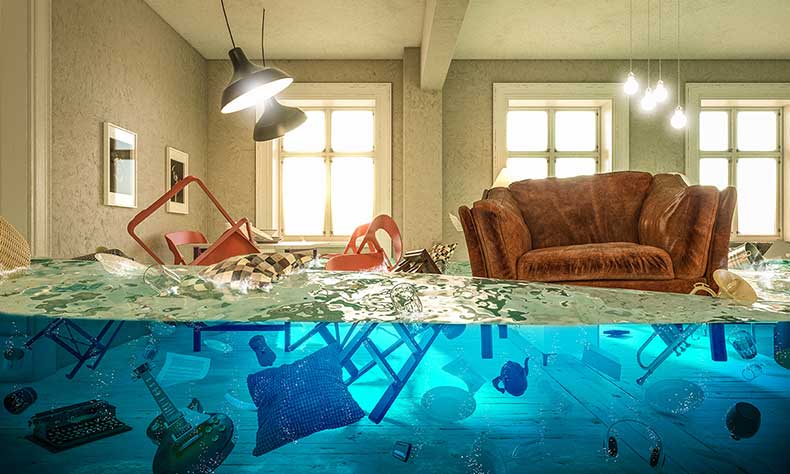While some plumbing issues are visible and obvious, others are not. And it’s these hidden leak inside of a wall that can potentially be the most troublesome, as they can lead to extensive water damage and mold growth if they’re not caught and repaired in a timely manner. But with so much plumbing roughed into drywall, it can certainly be a challenge to properly diagnose a plumbing issue without cutting through building materials to access the source of the leak. The good news is that there are several things that you can do to identify a potential leak – and its location – before you call the plumber to verify it. Here’s a closer look:
How to Find a Water Leak Inside a Wall
Inspect the Wall
If you suspect you may have an issue, the best way to find a leak’s whereabouts is to carefully inspect the area of the wall around where you think there may be a problem. Check for peeling paint, feel it for moisture or dampness, and look for any signs of mold formation.
Inspect From Below
If you can, try to venture to the area of the house directly below where you suspect the leak (i.e., basement, lower level). If the floor board is exposed, feel it for signs of dampness. If it’s not, look for peeling paint, moisture spots, water bubbles or mold growth on the drywall or ceiling tiles.
Check Your Bill
If you notice a jump in your water bill and your rates haven’t increased nor have you changed your water-using behavior, then it could suggest that there’s a leak somewhere within your home. Even a leaking faucet can waste several gallons of water per day, so an uptick in your water bill will definitely be noticeable if there’s any sort of leak within your plumbing. It’s a great way to verify that there may be a problem.
How a Plumber Can Help
If you’ve carried out the aforementioned inspections and believe there’s a plumbing leak within your home’s walls, your next step should be to contact a plumber. A plumber will likely confirm your suspicions by using a moisture meter to scan the suspected area of the wall to identify where the issue is. In some cases, they may also use an IR camera to “see inside” of the wall and observe the source of any moisture. These tools help pinpoint issues and allow for plumbers to make a smaller, more accurate cut into the drywall to access and repair the leak. In some cases, plumbers may be able to perform the fix without cutting into the wall at all.
Contact Fix and Flow Plumbing
For more information on what signs to look for to help diagnose a hidden plumbing leak, contact Fix and Flow Plumbing today. And if you suspect a leak after following the steps above, we’re standing by and ready to confirm and then make the necessary repairs in your home. Contact us today for more information.
